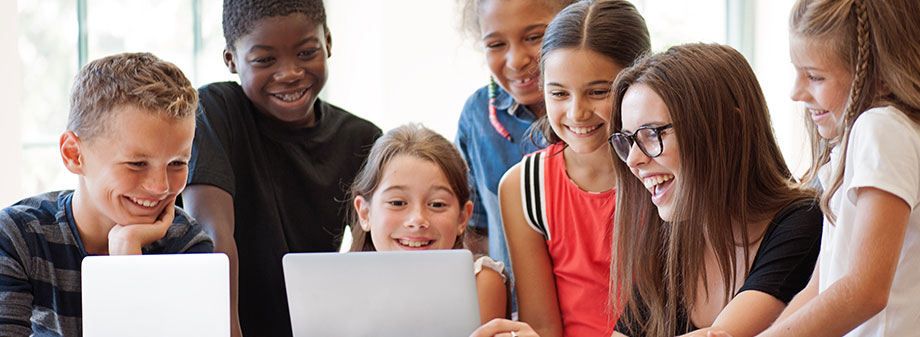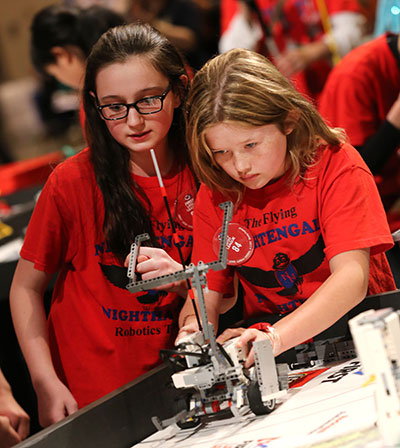How 3 Teachers Who Knew Nothing About Robotics Started a FIRST Program
Aug 23, 2017

The following article was originally published on We Are Teachers.
When Maureen Reilly, fourth-grade teacher at PS 261 in Brooklyn, NY, decided to co-lead a FIRST® LEGO® League team at her school, she had no idea what to expect. She wasn’t even sure she’d know what to teach. After all, she wasn’t “into” science or math and knew nothing about starting a robotics program. She did know one thing—a team would improve the situation. So she recruited the special education teacher and the technology teacher at her school. Neither knew anything about robotics either, but they all agreed, Maureen laughed, “to forgive ourselves for not knowing things.”
Despite being unsure at first, this robotics program remains one of Maureen’s best teaching experiences. Here are six lessons the three teachers learned when they pushed themselves and their students to discover more through STEM:
Maureen’s class was largely comprised of kids with special needs. She found that through robotics, every kid could choose to do an activity that built on a strength or worked in an area where they wanted to learn a new skill. The project’s parts appealed to the writers, mathematicians, readers, introverts, extroverts, and puzzle solvers alike.
The FIRST LEGO League program calls itself the Sport for the MindTM and Maureen agrees with the definition. She said she couldn’t believe how much she and her colleagues used their own minds as well. They were constantly stretching themselves to figure out what the next step would be. The coaches couldn’t help noticing how behavior issues decreased when student minds were this occupied.
Every robotics project starts simply. Students and teachers can stick there—building, taking apart, and reworking. But if students begin asking more questions, there are other components to layer on to the simple original. This helped students understand that we make a project as deep as we wish.
To solve real-world problems, students needed to use personal traits that enabled them to interact effectively and harmoniously with other kids. They learned communication, self-motivation, leadership, responsibility, teamwork, problem solving, decisiveness, ability to work under pressure, time management, flexibility, negotiation, and conflict resolution.
Before, during, and after each program, Maureen was excited to understand it just a bit more. She sought out professional development opportunities on her own. This helped her see how to motivate kids to want to learn for themselves and not for a grade.
So many of the kids were excited to build with LEGO® bricks and make new things, but the really exciting part for Maureen was how these projects showed kids new career pathways. They couldn’t believe it when their teachers told them that creating robots and coding games was a job for some people.
After doing it themselves, Maureen and her fellow teachers believe anyone can start a robotics program at their school. You’ve just got to be fine with (and enjoy) learning alongside your students. Start simple and move along as you understand more. In the end, you and your students will learn so much more than how to build a robot.
If you have an inspiring story or piece of wisdom that you’ve picked up through your experiences in the FIRST community, please reach out to us at inspire@firstinspires.org and inquire about becoming a guest contributor for Inspire.


